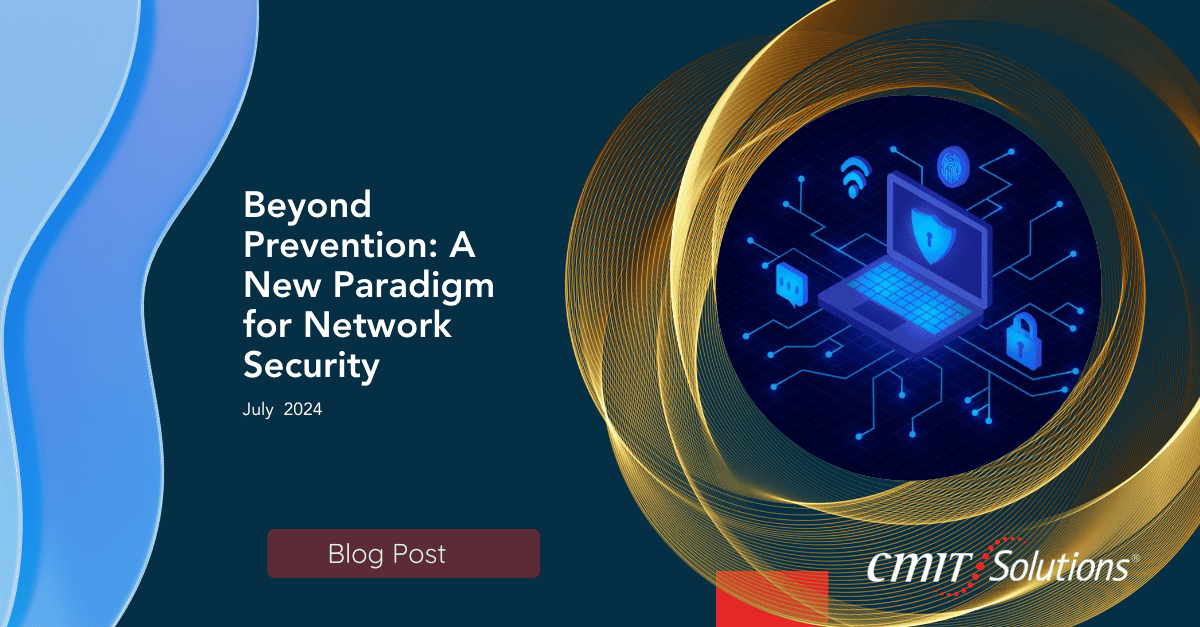Network security is no longer just about keeping the bad guys out. The modern digital landscape demands a more proactive and comprehensive approach to ensure that your systems are resilient against evolving threats. Moving beyond traditional prevention methods, organizations must adopt a multi-layered strategy that includes detection, response, and recovery. Here’s how to redefine network security to stay ahead of potential threats.
1. Adopt a Zero Trust Architecture
Zero Trust Architecture (ZTA) is a security model that operates under the assumption that threats can exist both inside and outside the network. It requires verification for every access request, ensuring that only authorized users can access the resources they need. This model significantly reduces the risk of unauthorized access and potential breaches, making it a cornerstone of modern network security.
For a robust implementation of Zero Trust, explore our cybersecurity services.
2. Implement Continuous Monitoring and Real-Time Threat Detection
To stay ahead of cyber threats, continuous monitoring and real-time threat detection are essential. These practices enable organizations to identify and respond to potential threats quickly, minimizing damage. Advanced analytics, powered by AI and machine learning, can detect anomalies and unusual patterns that might indicate a security threat, ensuring timely intervention.
Learn more about our network management services that offer advanced monitoring solutions.
3. Enhance Endpoint Security
Endpoints are often the weakest links in a network. Ensuring robust endpoint security helps protect against attacks that target individual devices. Comprehensive endpoint protection includes deploying up-to-date antivirus and anti-malware solutions, using mobile device management (MDM) to enforce security policies, and keeping all software updated with the latest patches.
For comprehensive endpoint protection, consider our managed services.
4. Utilize Secure Cloud Services
As more businesses move to the cloud, securing cloud services has become critical. Implementing best practices for cloud security ensures that your data remains protected. This includes encrypting data, implementing strict access controls, and conducting regular security audits to identify and address vulnerabilities.
Discover how our cloud services can enhance your cloud security strategy.
5. Strengthen Data Backup and Recovery
Data backup and recovery are critical components of a robust network security strategy. Regular backups ensure that you can quickly recover your data in the event of a breach or disaster. This involves scheduling automated backups, storing backups in secure, offsite locations, and regularly testing backup and recovery processes.
For reliable backup solutions, explore our data backup services.
6. Ensure Compliance with Security Regulations
Adhering to industry regulations and standards is crucial for maintaining network security. Compliance ensures that your security practices meet the required benchmarks for protecting sensitive data. This involves understanding regulatory requirements, implementing necessary controls, and maintaining detailed records to demonstrate compliance.
Our compliance services can help you navigate the complexities of regulatory compliance.
7. Leverage Unified Communications for Secure Collaboration
Unified communications platforms facilitate secure and efficient collaboration among employees. Ensuring these platforms are secure protects against potential vulnerabilities. This includes encrypting communications, implementing role-based access controls, and monitoring communication channels for suspicious activity.
Learn more about our unified communications solutions.
8. Develop a Cybersecurity Awareness Program
Human error is a significant factor in many security breaches. Developing a comprehensive cybersecurity awareness program educates employees about best practices and reduces the risk of human error. This includes conducting regular training sessions, using phishing simulations, and ensuring all employees are familiar with and follow the company’s security policies.
For tools to enhance employee awareness and productivity, explore our productivity applications.
9. Invest in Advanced Threat Protection
Advanced threat protection (ATP) solutions provide an additional layer of security by detecting and responding to sophisticated threats that traditional security measures might miss. This involves using behavioral analytics to detect unusual activity, isolating suspicious files and programs in a secure environment, and leveraging threat intelligence to stay informed about the latest threats and vulnerabilities.
Discover how our IT guidance services can support your investment in ATP solutions.
10. Develop and Test an Incident Response Plan
An effective incident response plan is crucial for minimizing the impact of security breaches. This plan should outline the steps to take immediately after an incident to contain and mitigate the damage, identify the cause, and restore normal operations. Regularly testing this plan ensures that your team is prepared to respond effectively when an incident occurs.
Explore our IT support services to help develop and test your incident response plan.
11. Enhance Network Visibility
Having a clear view of all activities within your network is essential for identifying potential threats and vulnerabilities. Implementing tools that provide detailed insights and analytics about network traffic can help you quickly detect and respond to suspicious activities.
Our network management services can provide the necessary tools and expertise to enhance your network visibility.
12. Implement Strong Identity and Access Management (IAM)
Managing who has access to your systems and data is a critical aspect of network security. Implementing a strong IAM framework ensures that only authorized users can access sensitive information, reducing the risk of insider threats.
For comprehensive identity and access management solutions, explore our IT guidance services.
Conclusion
Moving beyond traditional prevention methods to a more comprehensive network security strategy is essential in today’s digital landscape. By adopting a multi-layered approach that includes continuous monitoring, endpoint security, secure cloud services, data backup, compliance, unified communications, cybersecurity awareness, advanced threat protection, incident response planning, network visibility, and strong identity and access management, organizations can significantly enhance their resilience against evolving threats. For more information on how CMIT Tribeca can support your network security needs, visit our homepage. Protecting your business is our priority, and we are here to help you every step of the way.






